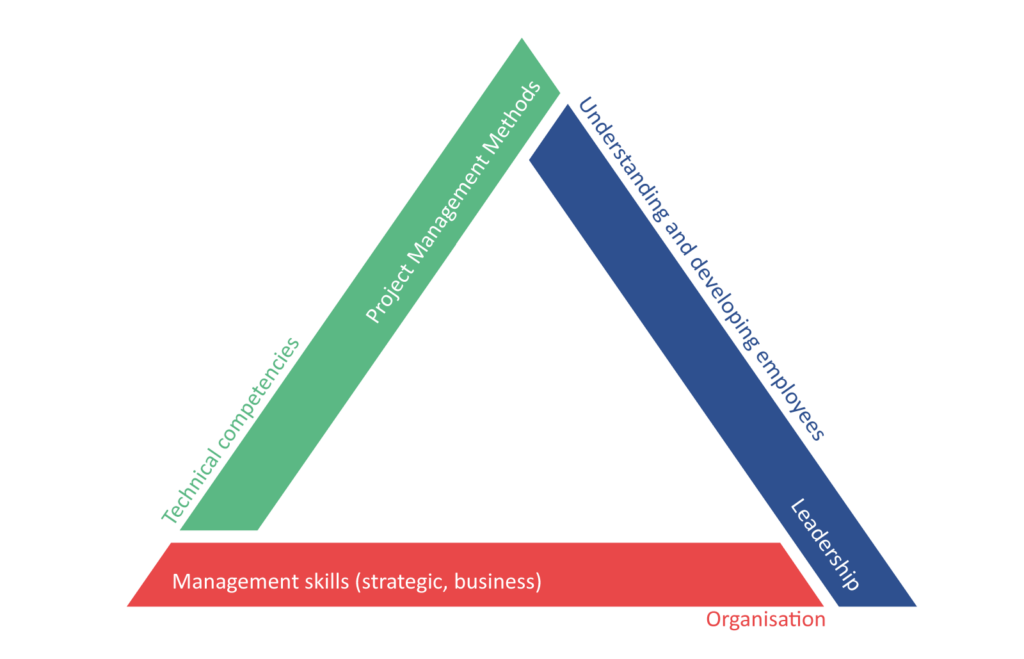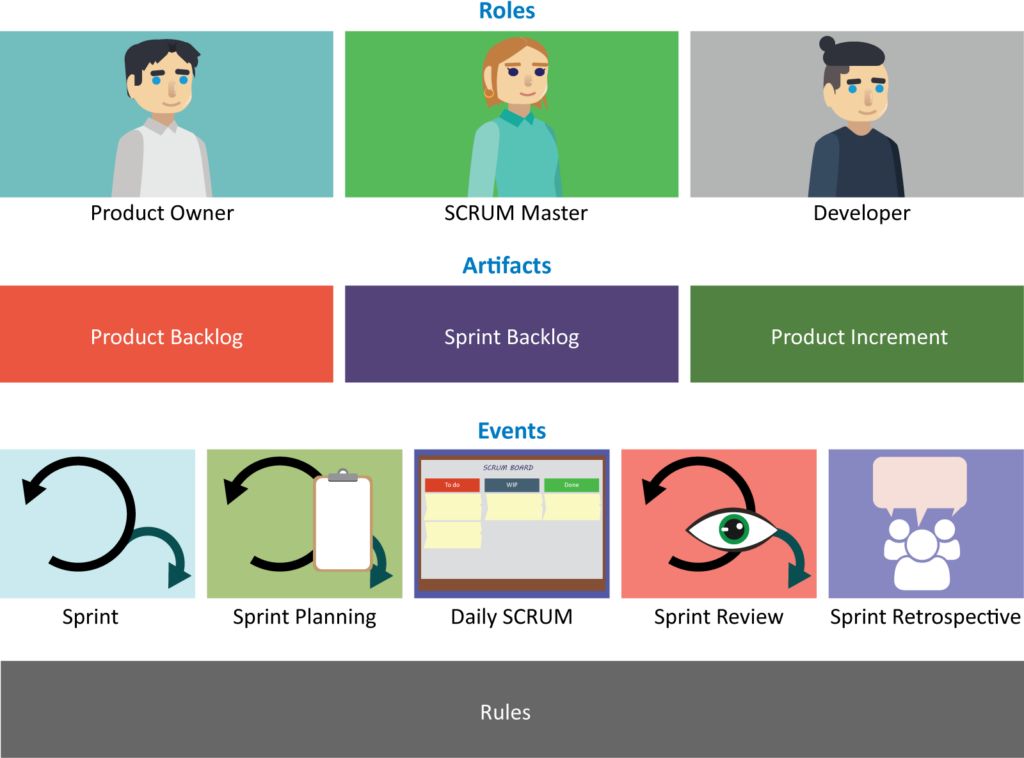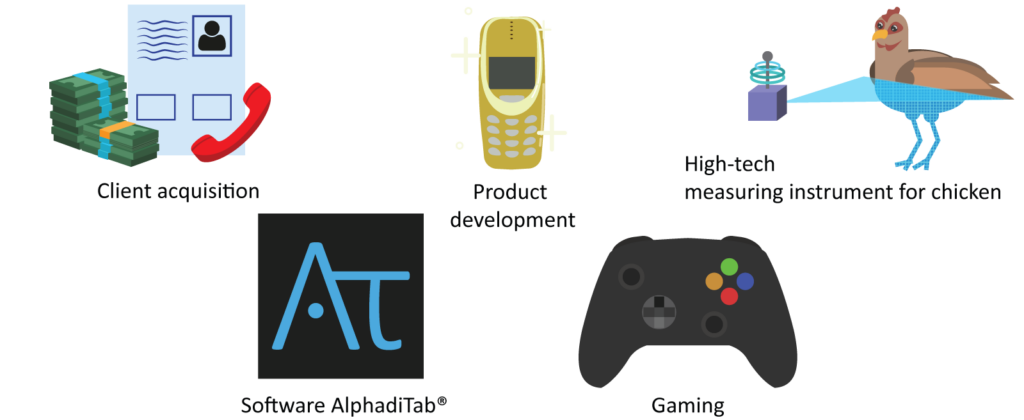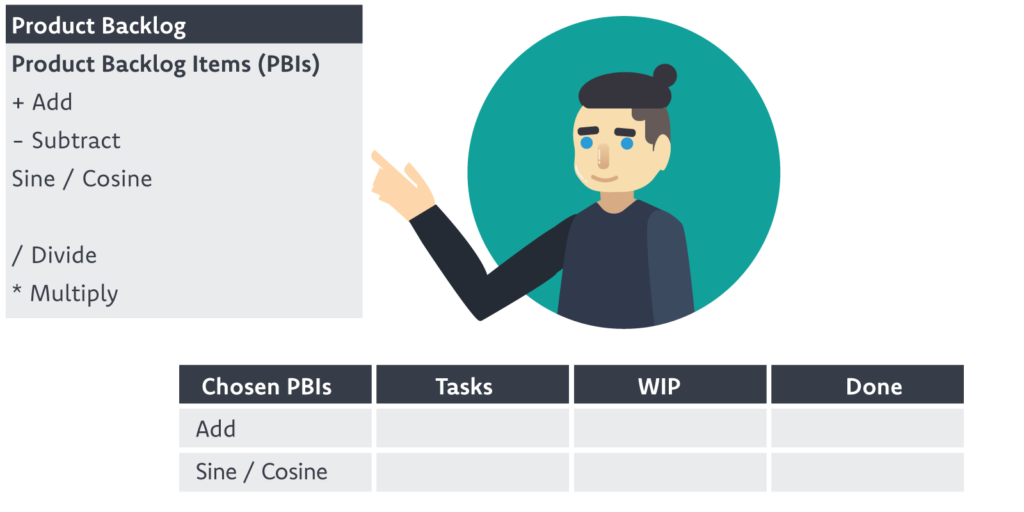- Alphadi Deutschland GmbH
- +49 561 949 189 0
- info@alphadi.org

Classical project management (PMI) is phase-oriented, following fixed plans, making it ideal for stable projects. Agile management, like SCRUM, works iteratively in short sprints, continuously adapting to new requirements. While PMI focuses on stability, SCRUM offers flexibility for dynamic projects.
„Below is an excerpt from our Blue Book, pages 60–73 (PMI) and 174–186 (SCRUM).“
A project is a one-time, time-limited undertaking to produce a product, service or result. There are various project management methods for carrying out projects. These can be roughly divided into agile and classic project management methods.

The reasons for carrying out a project can be very different. One main purpose is to create business value. A project is carried out to close a gap. For example, this gap could be quality issues, timing issues, or the need for new innovations.

One can manage projects that influence each other as a program and reap benefits through joint coordination. A program thus consists of several projects that are interrelated. A portfolio is a collection of individual projects, programs, and portfolios that are necessary to achieve strategic goals. The individual projects and programs in a portfolio do not have to be connected to each other. In a bigger portfolio, the projects, programs and portfolios are managed together.

A project can be carried out by a single person, but also by a team. In complex projects, working in a team is essential, as more team members have more skills.

The project manager is responsible for achieving the project goals and for leading the team. One person is appointed by the organization as the project manager. The project manager should have competencies in leadership, project management methods, and strategic / business management skills.

Apart from knowledge, soft and hard skills, each person should also demonstrate appropriate behavior. The most important values are:

PMI certified project managers who do not adhere to this code may be reported. The Project Management Institute verifies the behavior by putting the person through a disciplinary process.
In project management methods, a rough distinction is made between classic and agile project management. Classic project management divides the project processes into several phases that build on each other, i.e. once the first phase is complete, the next phase can be started. A phase is a collection of several activities that logically fit together. Between the phases, phase gates or gate reviews usually take place. Herein, the results of the phase are being reviewed. In agile project management, one proceeds iteratively, i.e., one executes several iteration loops in which one gets a bit closer to the project goal each time. The iterations should be independent of each other, so that they could be carried out in a varying order, meaning, one tries to produce a useful partial product after each iteration.

The magic triangle shows that the scope (requirements), the resources and the time in a project depend on each other and must therefore be coordinated. In classic projects, it is said that the scope is fixed and based on it the resources and time are determined. To this, most people would object, because often the budget and time for a project are determined first. In an agile approach, the scope is variable. Now one can debate how it is with time and resources: in SCRUM, the time for a sprint is fixed. Due to the fact that people are mainly needed as resources (attention: this applies especially in software development), these are also fixed. Or you can argue that the number of sprints is not fixed, therefore the time is not fixed and consequently the costs are not fixed either. In classic projects, the project scope is defined at the beginning whereas in agile projects it is not.

Projects are carried out in a corporate environment. Since every corporation / company is different, project management should adapt according to the circumstances.

EEF stands for “Enterprise Environmental Factors”. These are conditions from the internal and external environment that cannot be directly influenced by the project team, but which have in reverse an effect on the project.
Examples of internal EEFs:
Examples of external EEFs:
OPA stands for “Organizational Process Assets”. The organization’s process assets describe company-specific plans, processes, policies and procedures. These should be taken into account when implementing projects.
Examples:
The Project Management Office (PMO) is an organizational structure that standardizes project execution in terms of tools, processes, procedures and leadership. The PMO can be a department or an individual. The PMO’s influence on project execution can take different forms. The PMO can support, control or instruct the project manager.

Officially, a project usually starts with the project order. Before the project order is signed, the initial information such as costs and benefits of the project are already being worked out.

The natural end of a project is the achievement of the project goal, such as the completion of a house. But there are also projects that are never completed because there are no more financial resources available, the result is no longer needed, the resources are lacking or because the project goal is legally obsolete.
One can divide the necessary steps during a project into five process groups: the initiating process group, the planning process group, the executing process group, the monitoring and controlling process group and the closing process group. These process groups do not run consecutively, but in parallel. Depending on the point in time in the project, there are more or fewer tasks in the individual process groups.

In this diagram, you can see the progression over time and the magnitude of the effort at different points in time. At the beginning of a project, there are a lot of tasks in the initiating process group and in the planning process group. In the following pages, the process groups are reviewed one after the other, although they are often executed simultaneously during a project.
SCRUM is an agile project management method. The origin of SCRUM lies in software development. The two founders Jeff Sutherland and Ken Schwaber stand behind SCRUM and the SCRUM Guide, which describes what SCRUM is exactly. SCRUM is continuously being further developed. The changes can be seen in the latest SCRUM Guide, which can be found free of charge on the Internet.

SCRUM is a simple framework built on the following elements:

The idea of SCRUM is to develop a product in several time loops (iterations or sprints). For this purpose, the known requirements for the product are first collected in a list, the product backlog. From the list, the items that can be accomplished in the upcoming sprint or iteration are selected. During the sprint, the requirements are implemented so that a partial product is created at the end. This is examined in order to identify improvements. The next sprint then starts again with the selection of requirements.

Although SCRUM has its origins in software development, it can also be applied well in other areas.

A SCRUM team typically consists of ten people or less. In SCRUM, three roles with different responsibilities are distinguished: the SCRUM Master, the Product Owner and the Developers. In each SCRUM team there is a SCRUM Master, a Product Owner and several Developers. There can also be a double assignment, for example, that the SCRUM Master is also a Developer. However, this is usually not recommended, as it can lead to a conflict of roles.

A SCRUM project consists of several sprints. The number of sprints required to complete the project is often not yet known at the beginning of the project. This is due to the fact that in some projects the requirements are not fully known at the beginning. Not knowing all the requirements often leads to problems when executing projects with classic project management methods such as the waterfall model. This is where SCRUM offers a solution.

In SCRUM, there are five events: the Sprint, Sprint Planning, Daily SCRUM, Sprint Review, and Sprint Retrospective. The Sprint itself is a container and houses the other events. A Sprint has a fixed time period with a maximum of 4 weeks. During the sprint, a finished product increment is produced by the developers. A Sprint starts with the Sprint Planning Meeting, in which the Sprint that has just started is planned. After the planning the implementation takes place. During this phase the Daily SCRUM takes place every day. Shortly before the end of the Sprint, the product increment is examined in the Sprint Review in order to identify improvements and missing functions. After the Sprint Review, the Sprint Retrospective takes place. The aim here is to identify potential for improving collaboration and efficiency. The Sprint ends when the timebox has ended. Then the next Sprint starts.

A sprint can be cancelled if the sprint goal becomes obsolete. The sprint cancellation may only be initiated by the product owner.
In SCRUM, all events are time-boxed. The maximum duration of the events is set to 4 weeks for the Sprint, 8 hours for the Sprint Planning (for a 4-week Sprint, otherwise usually shorter), 15 minutes for the Daily SCRUM (always), 4 hours for the Sprint Review (for a 4-week Sprint, otherwise usually shorter) and 3 hours for the Sprint Retrospective (for a 4-week Sprint, otherwise usually shorter). Except for the Sprint, all other events may be ended early if they have served their purpose. The duration of the Sprint Planning, Sprint Review and Sprint Retrospective is usually adjusted to the Sprint length.

The Sprint starts with the Sprint Planning Meeting. The Sprint Planning is a meeting where the entire SCRUM team meets to plan the Sprint that has just started. For a Sprint length of 4 weeks, a maximum timebox of 8 hours is available for this event. If you choose shorter sprints, the time is usually reduced. As a rule of thumb, you should plan about 2 hours per sprint week for the sprint planning meeting. During this event, the team defines the sprint goal together. The developers select the entries from the product backlog that they can complete in this sprint and create an implementation plan for the selected entries.


The Daily SCRUM takes place each day in the sprint. It has a timebox of 15 minutes, regardless of how many developers are working on the project and which sprint length is selected. The Daily SCRUM always occurs in the same place at the same time and is a meeting for the Developers. The SCRUM Master and the Product Owner do not have to participate in the Daily SCRUM. During the Daily SCRUM the Developers check if the progress in the Sprint is appropriate (e.g. with the burn-bown chart) and discuss the task distribution for the next 24 hours. During this process, the Sprint Backlog – also called SCRUM Board – is adjusted.

The Sprint Review provides a formal opportunity for the SCRUM team to meet with key stakeholders to discuss the product. The goal is not to sign off on the increment, but to work together to find potential improvements to the increment and to discuss the next steps.

The Sprint Retrospective is a lessons learned meeting for the entire SCRUM team. During the meeting, improvements for the quality and speed of the SCRUM team are collected, selected and, if possible, implemented immediately. The focus during the retrospective is on the team collaboration, the techniques used and the documents used, such as the “Definition of Done“. The problems that occurred in the last sprint provide a good indication for improvements.


With more than 4,000 projects and case studies, Alphadi is a leader in the field of Lean Six Sigma and Sales Process Engineering. We advise you holistically so that your goals are achieved sustainably and in the long term.
2025 © All Rights Reserved.